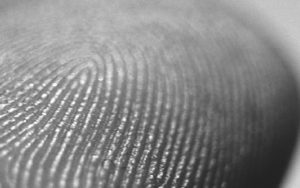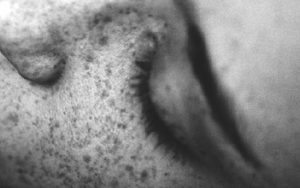Dr Markus Egert explores the bacteria that are found in our skin microbiome – starting with Staphylococci. As the research into the skin microbiome grows, we must continue to expand our knowledge and challenge our assumptions of the bacteria at the heart of the research.
For a long time, it was believed that the microorganisms on skin merely represent a source of infection or, at the most positive end of the spectrum, they were neutral commensals residing on our skin. Nowadays, we know that the skin microbiome plays a major role in our skin health and wellbeing. Yet, the entirety of how this complex ecosystems works is far from being fully understood and one of the main reasons that this a promising and exciting area of research.
As we gain a deeper understanding of the role of the human skin microbiome, we need to further our knowledge of the biology and the major actors at play. Over the coming weeks, we will explore the fascinating biology of selected microorganisms that live on our skin. Let´s start with one most important and abundant groups: the staphylococci.
The staphylococci
The name of this genus, composed of the Greek-based prefix “staphylo” (grape) and the Latin-based suffix “coccus” (globular) is based on its morphological appearance under the microscope. The spherical cells are approximately 1 mm (0.000001m) in diameter and typically form a grape-like cluster, occasionally accompanied by single cells and short-chained clusters, making these bacteria easy to identify.
Staphylococci are not restricted to the human or vertebrate skin, but occur widely in nature, including soil, water, and plant surfaces, which means also on food. These bacteria have many features that enable them to thrive human skin, a notoriously tough habitat, as they are drought-resistant (xerophilic), salt-resistant (osmotolerant) and can thrive with and without oxygen (facultative anaerobic[1]).
“These bacteria have many features that enable them to thrive human skin, a notoriously tough habitat. ”
They are Gram-positive which means they have a very thick cell-wall and a low content of Guanine and Cytosine in their DNA. This is why they are assigned to the phylum Firmicutes, which is a Latin-based expression meaning “thick-skinned”. Besides corynebacteria and propionibacteria (nowadays termed cutibacteria), staphylococci are the typical bacteria of human skin, usually making significant percentages of all bacteria in many investigated niches of the human skin[2]. Consequently, they are also frequently found on surfaces and objects that have regular contact with the human skin, such as computer keyboards, smartphones or door handles, and thus they are of a high hygienic relevance. The easy adherence to surfaces, including the human skin, is due to the fact that staphylococci are quite “sticky”. They frequently form biofilms: three-dimensional structures in which the bacteria reside within a self-made slimy (polymeric) matrix on a surface, often together with a large diversity of other microorganisms.
At present, the genus Staphylococcus comprises an estimated 50 different species. Two of them are very frequently mentioned in the context of skin microbiome research: Staphylococcus aureus (S. aureus) and Staphylococcus epidermidis (S.epidermidis). Their roles seem well defined with S. aureus is the “villain”, and S. epidermidis the “hero” of the story. Why is that? Does this presumption stand the test of time?
A deserved villainous reputation?
S. aureus is, perhaps ironically, the “golden” staphylococcus, because it forms yellowish colonies on agar plates; the translation from the Latin ‘aurum’ is gold. This bacterium is present on the skin microbiome of ‘healthy’ people, however, it has a high pathogenic potential and plays a vital role in many types of infections – both of the skin and beyond. Like a well-equipped warrior, S. aureus possesses many so called virulence-factors (weapons), with which it can harm a host upon injury and escape its, often weakened, immune system from combatting the infection
S. aureus frequently cause blood (sepsis), ear, bone and lung infections, and can also lead to food poisoning. S. aureus can be isolated from virtually every abscess. Simply speaking, abscesses are pus-filled holes, carved into healthy tissue by the “flesh-melting” enzymatic activity of bacteria – such as S. aureus. One of the most important enzymatic activities is plasma coagulase, an enzyme that leads to the clumping of human blood plasma. S. aureus uses this enzyme to ‘paper’ the inner walls of an abscess, thereby making it a protected environment to proliferate to very high cell numbers of these villainous bacteria. Based on the presence or absence of coagulase activity, staphylococci are grouped into CNS (coagulase negative) and CPS (coagulase positive staphylococci), with S. aureus by far being the quantitatively most important member of the CPS.
“Like a well-equipped warrior, S. aureus possesses many so-called virulence-factors (weapons), with which it can harm a host upon injury and escape its, often weakened, immune system from combatting the infection.”
High numbers of S. aureus are associated with skin disease or inflammation, such as atopic dermatitis. Consequently, these diseases are usually treated with antibiotics, which has led to many strains of S. aureus developing antibiotic resistance genes, turning them into multi-resistant S. aureus (MRSA) species. As is well-known, infections with these (and other types) of resistant bacteria are a world-wide threat to human health.
Staphylococcus epidermidis saves the day?
S. epidermidis is much more widespread on human skin than S. aureus – the epidermis being the top most layer of the human skin. This species occurs in virtually every microbiome that is associated with the human skin, usually in high numbers. Carrying no plasma coagulase, it belongs to the CNS group.
Research over the last years has shown that this species has many features that might be beneficial for a host. For instance, it was shown that some strains of. S. epidermidis, but not of S. aureus, produce a factor that stimulates the production of antimicrobial protective skin enzyme, so called defensins, by skin keratinocytes. Other strains of S. epidermidis were shown to produce a protease (a protein-degrading enzyme) that destroys S. aureus biofilms. The latter finding might serve as basis for a probiotic treatment against colonization of humans with MRSA – a treatment that utilizes living bacteria as active agents.
Despite the many beneficial functions that have been proven for S. epidermidis, this species is still categorized as a potential pathogen and is the main cause for foreign-objects associated human infections – such as infections caused by catheters or implants. In addition, S. epidermidis can also carry antibiotic resistance genes, turning sensitive species into MRSE (multi-resistant S. epidermis). On the other hand, for many people S. aureus is a commensal bacterium with which they live together in peaceful harmony. Further to this, the positives of S. aureus are slowly being discovered; a study has shown a beneficial effect for multiple sclerosis thanks to a chronic infection with S. aureus.
Shades of grey

“We now know that no bacterium is absolutely good or bad – there is no clear black or white in life, but rather shades of grey.”
So, how do we harness this knowledge for the development of skin treatments and cosmetics? We now know that no bacterium is absolutely good or bad – there is no clear black or white in life, but rather shades of grey. The ecosystem is hugely complex and it is the balance and interaction (or lack of) between bacterium on the skin microbiome that can catalyze the “good” or “bad”. The Helicobacter pylori provides an excellent example of this. It is a resident bacterium in the human stomach and the only bacterium that has so far been categorized as carcinogenic, yet interestingly research has shown that eradication of this bacterium may have negative consequences such as oesophageal cancer, allergy or asthma[3].
Skin treatments should aim at preserving a balanced and healthy ratio of S. aureus vs S. epidermidis instead of selectively reducing or promoting one or the other. Clearly, we are just on the cusp of our understanding and more research is needed to truly identify and articulate what this coveted healthy or balanced ratio is.
Want to find out more about the human microbiome? Find out about the skin layers here and see more on our Instagram here.
[1] Michael Wilson(2008). Bacteriology of Humans: An Ecological Perspective. Wiley-Blackwel, 1st edition, 360 pp.
[2] The Skin Microbiome, doi: 10.1038/nrmicro2537
[3] Helicobacter pylori: a beneficial gastric pathogen? doi: 10.3389/fmed.2014.00026
